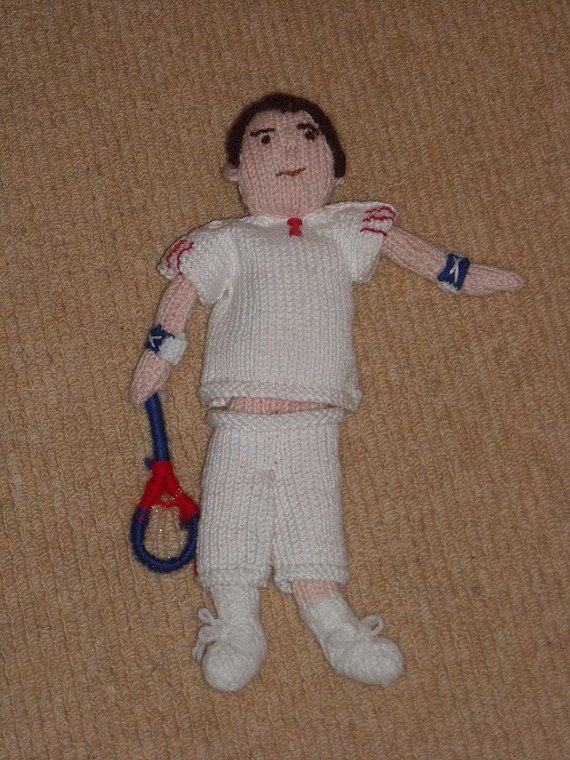
Meet KAM, or knitted Andy Murray. Yes, this is a fully knitted model of Andy Murray – even the racket is knitted – and he formed the subject of one of the oddest assignments of my journalistic career. It adds a very different and distinctly bizarre twist to Murray’s remarkable achievement of finishing the year as world No 1 on a ferociously difficult playing schedule at the ATP Finals.
I have a very good friend, who shall remain nameless because she is a highly respected professional in her chosen branch of the health world, but like many people chills out as an avid tennis fan. And she’s a particularly avid fan of Rafael Nadal and Andy Murray.
Some years back a friend of hers who knew her passion for tennis knitted her a doll of Andy Murray. All the details are there – the three stripes on the sleeves (he was with Adidas then), the Scottish sweatbands, etc – and KAM became a travelling mascot.
Last week at the O2 Arena, she had a front-row seat just by the area where the players enter and leave the court. So after Murray’s win over Marin Cilic, she asked him for a selfie: a threesome comprising the real Andy Murray, knitted Andy Murray and herself. But in the madness that envelopes Andy Murray after every match, especially in this country, Andy mistook the wish for a selfie, thought she was giving him KAM, and walked off with the doll.
Cue a few anguished text messages from my friend, telling me the sorry tale. She was very good about it – she made it clear that if Andy wanted it, perhaps as a toy for his daughter Sophia, she’d be delighted to bequeath it to him, but she didn’t want KAM just to end up in a pile of unwanted gifts that gathers dust and is then thrown out.
I therefore took on the mantle of the detective: my mission to get KAM back! And thanks to the very swift efforts of Matt Gentry, Andy’s incredibly affable and helpful manager (it says a lot about Andy that he has such a man as his agent, rather than the more common Rottweiler model), knitted Andy Murray was retrieved and is now on his way to his original owner.
All of which is bizarre enough, but would have been well-nigh impossible to imagine when I first started touring as a journalist on the tennis circuit in the early 1990s. That was the dark ages of British tennis, in fact in 1992 we were ecstatic at having a player (Jeremy Bates) in the fourth round of Wimbledon. Now we consider it a right that we have a potential champion every year, and people knit dolls of Andy Murray.
The intensity of the tennis circuit means that Murray’s achievement is hardly ever fully appreciated. The effort and sacrifices he has had to make are the kind of thing that normally only come with a somewhat warped character, and yet – apart from his seriously stressed-out demeanour during matches – he is a helpful, sensitive, compassionate man. We really don’t know how lucky we are to have him as the sporting icon of our age.
